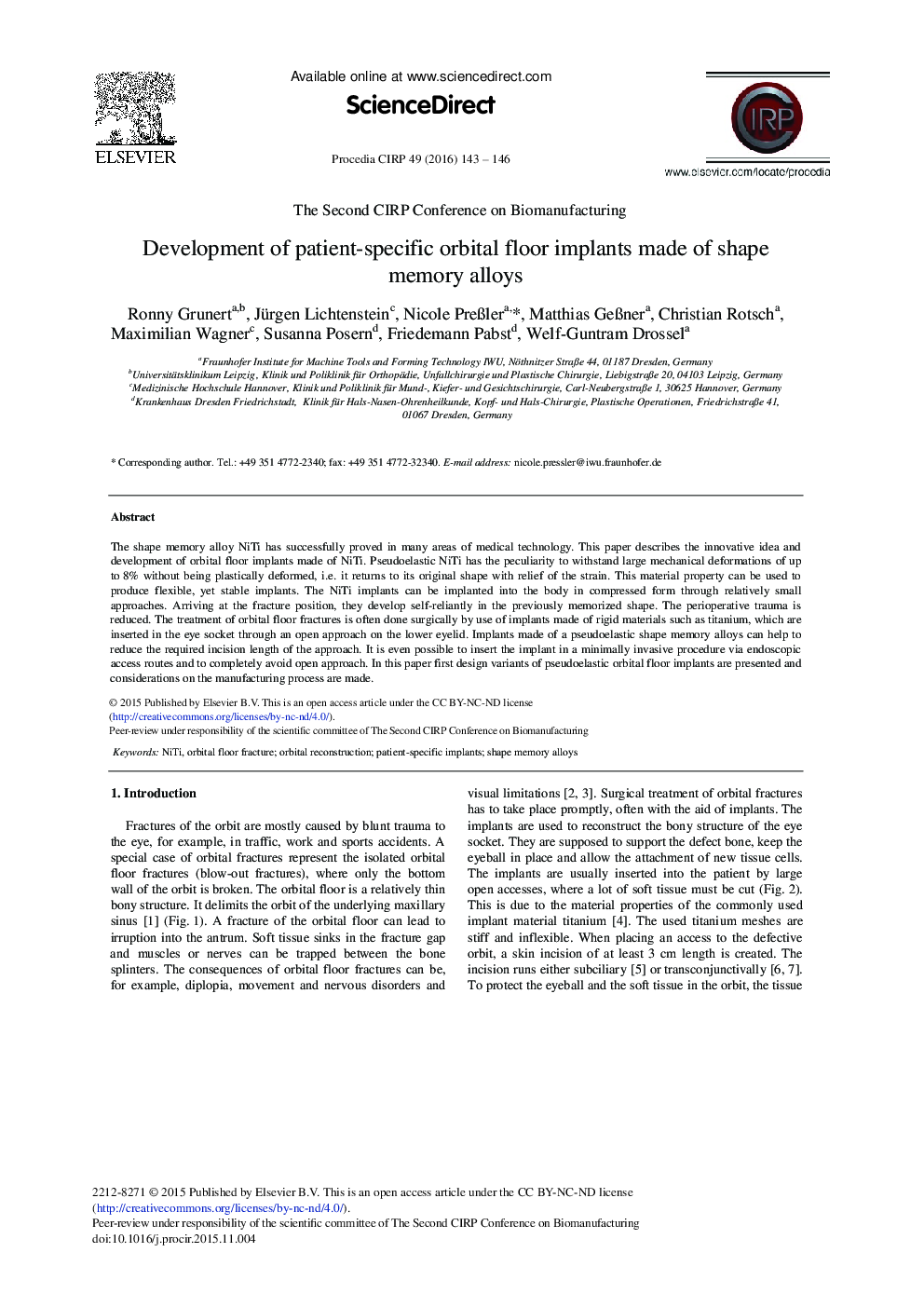| Article ID | Journal | Published Year | Pages | File Type |
|---|---|---|---|---|
| 1698243 | Procedia CIRP | 2016 | 4 Pages |
The shape memory alloy NiTi has successfully proved in many areas of medical technology. This paper describes the innovative idea and development of orbital floor implants made of NiTi. Pseudoelastic NiTi has the peculiarity to withstand large mechanical deformations of up to 8% without being plastically deformed, i.e. it returns to its original shape with relief of the strain. This material property can be used to produce flexible, yet stable implants. The NiTi implants can be implanted into the body in compressed form through relatively small approaches. Arriving at the fracture position, they develop self-reliantly in the previously memorized shape. The perioperative trauma is reduced. The treatment of orbital floor fractures is often done surgically by use of implants made of rigid materials such as titanium, which are inserted in the eye socket through an open approach on the lower eyelid. Implants made of a pseudoelastic shape memory alloys can help to reduce the required incision length of the approach. It is even possible to insert the implant in a minimally invasive procedure via endoscopic access routes and to completely avoid open approach. In this paper first design variants of pseudoelastic orbital floor implants are presented and considerations on the manufacturing process are made.
